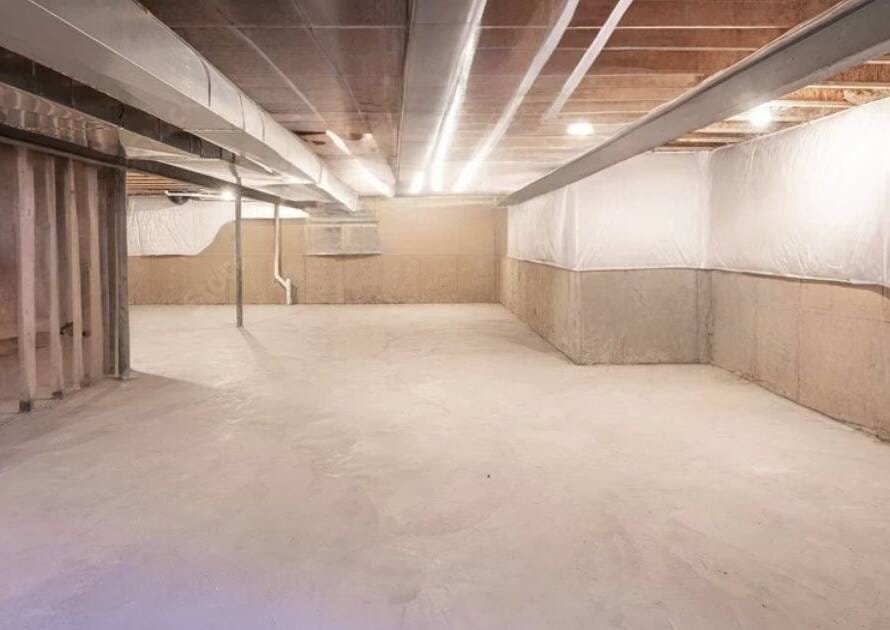In recent years, sustainability has become a paramount concern in various aspects of our lives, and home renovations are no exception. As homeowners become increasingly aware of their environmental impact, the demand for eco-friendly renovation options has surged. This shift towards sustainable home improvements is not just a passing trend but a necessary step towards creating a more environmentally responsible future.
Eco-friendly renovations offer a multitude of benefits that extend far beyond their positive environmental impact. First and foremost, these green improvements can lead to significant energy savings. By implementing energy-efficient solutions, homeowners can substantially reduce their utility bills while simultaneously decreasing their reliance on non-renewable energy sources.
Moreover, sustainable renovations play a crucial role in reducing a home’s carbon footprint. As climate change continues to be a pressing global issue, every step towards minimizing greenhouse gas emissions becomes invaluable. By choosing eco-friendly materials and energy-efficient systems, homeowners can actively contribute to the fight against climate change.
Another compelling advantage of eco-friendly renovations is the potential increase in property value. As environmental consciousness grows among homebuyers, properties with sustainable features are becoming increasingly desirable. Homes equipped with energy-efficient appliances, solar panels, or other green technologies often command higher prices in the real estate market, making eco-friendly renovations a wise investment for the future.
Sustainable Building Materials
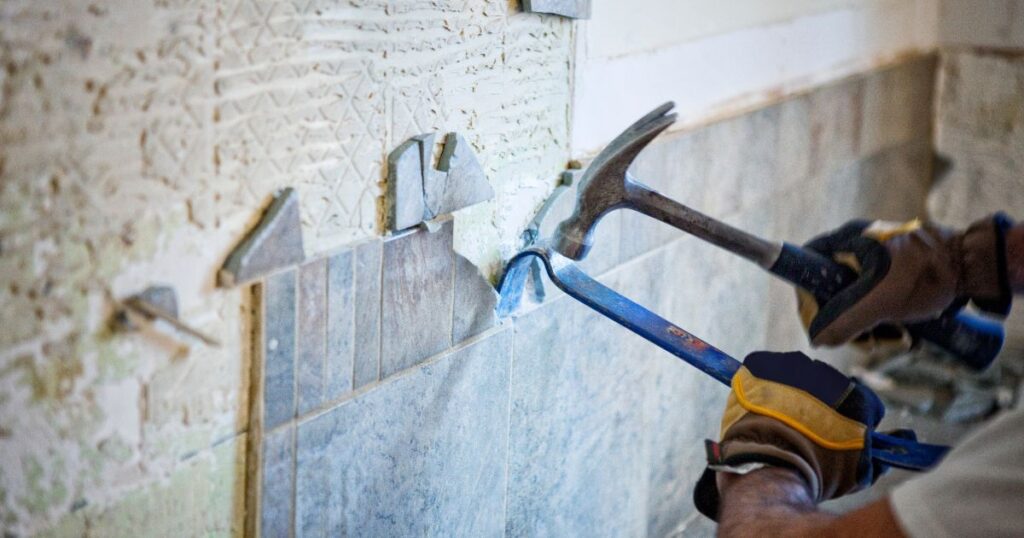
When undertaking eco-friendly renovations, one of the most impactful choices you can make is selecting sustainable building materials. These materials not only reduce environmental impact but also contribute to a healthier living space.
Recycled and Reclaimed Materials: One of the most effective ways to promote sustainability in home renovations is by using recycled or reclaimed materials. These options give new life to existing resources, reducing waste and the demand for new raw materials.
- Reclaimed Wood: Salvaged from old buildings, barns, or retired ships, reclaimed wood adds character and history to your home while preventing deforestation. It can be used for flooring, accent walls, or custom furniture pieces.
- Recycled Metal: Materials like recycled steel and aluminum can be used in structural elements, roofing, or decorative features. These metals require significantly less energy to process compared to virgin materials.
- Bamboo: Although not recycled, bamboo is a highly renewable resource that grows much faster than traditional hardwoods. It’s durable and versatile, making it an excellent choice for flooring, cabinetry, and even textiles.
Low-VOC Paints and Finishes: Volatile Organic Compounds (VOCs) are harmful chemicals found in many traditional paints and finishes. They can off-gas for years, negatively impacting indoor air quality and potentially causing health issues. Opting for low-VOC or zero-VOC alternatives is crucial for creating a healthier living environment.
- Low-VOC Paints: These paints release fewer harmful chemicals into the air, reducing indoor air pollution. They’re available in a wide range of colors and finishes, making them suitable for any design style.
- Natural Finishes: Consider using natural oils, waxes, or water-based polyurethane for wood finishes. These options provide protection while minimizing harmful emissions.
- Low-VOC Adhesives and Sealants: Don’t forget about the less visible materials. Choose low-VOC options for any adhesives, caulks, or sealants used in your renovation project.
By incorporating these sustainable building materials into your renovation project, you’re not only creating a more eco-friendly home but also fostering a healthier living environment for you and your family. These choices demonstrate a commitment to sustainability that goes beyond energy efficiency, addressing the entire lifecycle of your home’s components.
Energy-Efficient Windows and Doors
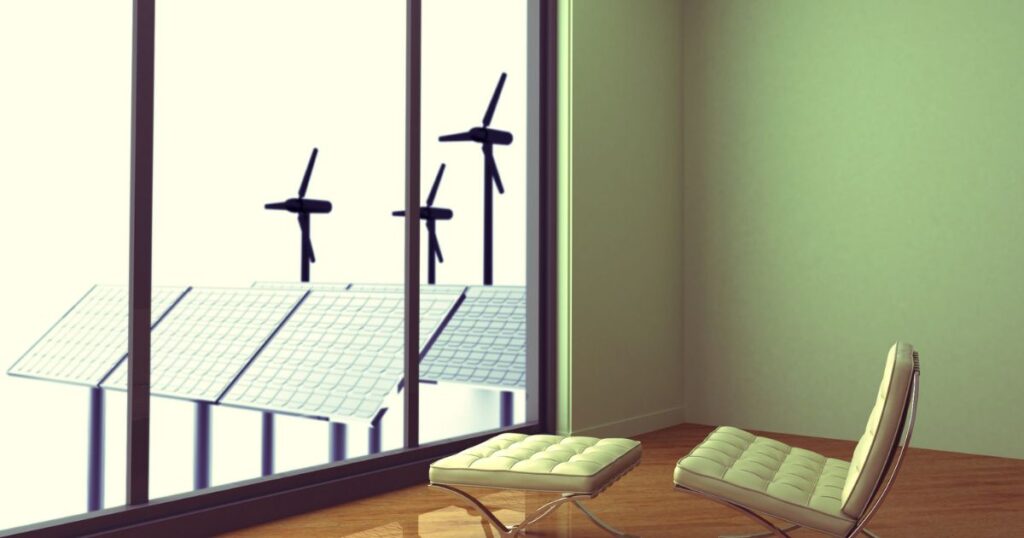
One of the most effective ways to improve your home’s energy efficiency is by upgrading your windows and doors. These elements play a crucial role in maintaining your home’s internal temperature and can significantly impact your energy consumption.
Importance of Energy-Efficient Windows and Doors:
- Reduce Heat Loss: Windows and doors are common areas where heat escapes from your home. Energy-efficient options can dramatically reduce this heat loss, keeping your home warmer in winter and cooler in summer.
- Lower Energy Bills: By minimizing heat transfer, energy-efficient windows and doors can help reduce your heating and cooling costs, potentially saving you hundreds of dollars annually.
- Improve Comfort: These upgrades can eliminate drafts and cold spots near windows and doors, creating a more comfortable living environment throughout your home.
- Reduce Condensation: Energy-efficient windows are less likely to develop condensation, which can lead to mold growth and deterioration of window frames.
- UV Protection: Many energy-efficient windows come with coatings that block harmful UV rays, protecting your furniture and flooring from sun damage.
Tips for Selecting Energy-Efficient Windows and Doors:
- Choose Double or Triple-Pane Windows:
- Double-pane windows have two layers of glass with an insulating air or gas layer between them. They provide significantly better insulation than single-pane windows.
- Triple-pane windows offer even better insulation, with two insulating layers between three panes of glass. While more expensive, they can be worthwhile in extreme climates.
- Look for Low-E Glass:
- Low-emissivity (Low-E) coatings on glass help reflect heat back into your home in winter and keep heat out in summer.
- Consider Gas Fills:
- Windows filled with argon or krypton gas between the panes provide better insulation than those filled with air.
- Check for ENERGY STAR Certification:
- ENERGY STAR certified windows and doors meet strict energy efficiency guidelines set by the U.S. Environmental Protection Agency and the Department of Energy.
- Choose Insulated Doors:
- Look for doors with a foam core for better insulation. Fiberglass and steel doors typically offer better energy efficiency than wooden doors.
- Pay Attention to Weather Stripping:
- Ensure doors have high-quality weather stripping to prevent air leaks around the edges.
- Consider the Frame Material:
- For windows, materials like vinyl, fiberglass, and wood offer better insulation than aluminum.
- Proper Installation is Key:
- Even the most energy-efficient windows and doors won’t perform well if not installed correctly. Always use experienced professionals for installation.
By investing in energy-efficient windows and doors, you’re not only reducing your carbon footprint but also creating a more comfortable living space and potentially increasing your home’s value. While the upfront costs may be higher than standard options, the long-term energy savings and improved comfort make this an excellent choice for any eco-friendly home renovation.
Solar Energy Solutions
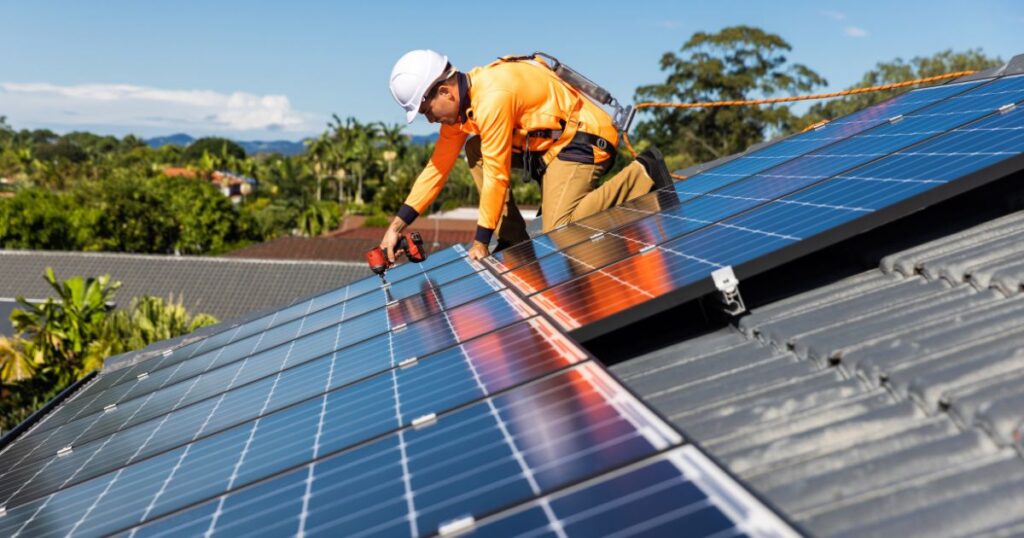
Harnessing the power of the sun is one of the most effective ways to make your home more sustainable. Solar energy solutions not only reduce your reliance on fossil fuels but can also lead to significant long-term cost savings.
Benefits of Installing Solar Panels:
- Renewable Energy Source: Solar panels convert sunlight into electricity, providing a clean, renewable energy source for your home.
- Reduced Energy Bills: By generating your own electricity, you can significantly lower or even eliminate your monthly energy bills.
- Low Maintenance: Solar panels typically require minimal maintenance and can last for 25-30 years with proper care.
- Increased Home Value: Homes with solar installations often have higher resale values and may sell faster than non-solar homes.
- Energy Independence: Solar panels can provide energy security, especially when combined with battery storage systems.
- Tax Incentives: Many governments offer tax credits or rebates for solar panel installations, making the initial investment more affordable.
- Environmental Impact: Solar energy drastically reduces your carbon footprint, helping combat climate change.
When considering solar panels, it’s important to assess your roof’s sun exposure, the size of your system based on energy needs, and local regulations. Consulting with a professional solar installer can help you determine the best setup for your home.
Solar Water Heaters:
Solar water heaters are another excellent way to harness solar energy for your home:
- Types: There are two main types – active systems (with pumps and controls) and passive systems (which rely on natural water circulation).
- Energy Savings: Solar water heaters can provide up to 80% of your home’s hot water needs, significantly reducing energy consumption.
- Year-round Efficiency: Many solar water heaters work effectively even in colder climates, though they may require a backup system for cloudy days.
- Environmental Impact: By reducing reliance on gas or electric water heaters, solar water heaters can significantly lower your carbon emissions.
Other Solar-Powered Appliances:
Beyond panels and water heaters, there are various other solar-powered appliances and devices to consider:
- Solar-Powered Outdoor Lighting: These lights charge during the day and illuminate your garden or pathways at night, requiring no electricity from the grid.
- Solar Attic Fans: These can help ventilate your attic, reducing cooling costs in summer without increasing your energy bills.
- Solar Chargers: Small solar panels can charge devices like phones, tablets, and laptops, perfect for outdoor use or during power outages.
- Solar-Powered Security Cameras: These operate independently of your home’s electrical system, enhancing security without increasing energy consumption.
- Solar Pool Heaters: For homes with swimming pools, solar heaters can extend the swimming season without high energy costs.
Implementing solar energy solutions in your home renovation not only contributes to a more sustainable lifestyle but also offers long-term financial benefits. While the initial investment may be significant, the combination of energy savings, potential incentives, and increased home value make solar solutions an attractive option for eco-conscious homeowners.
Green Insulation Options
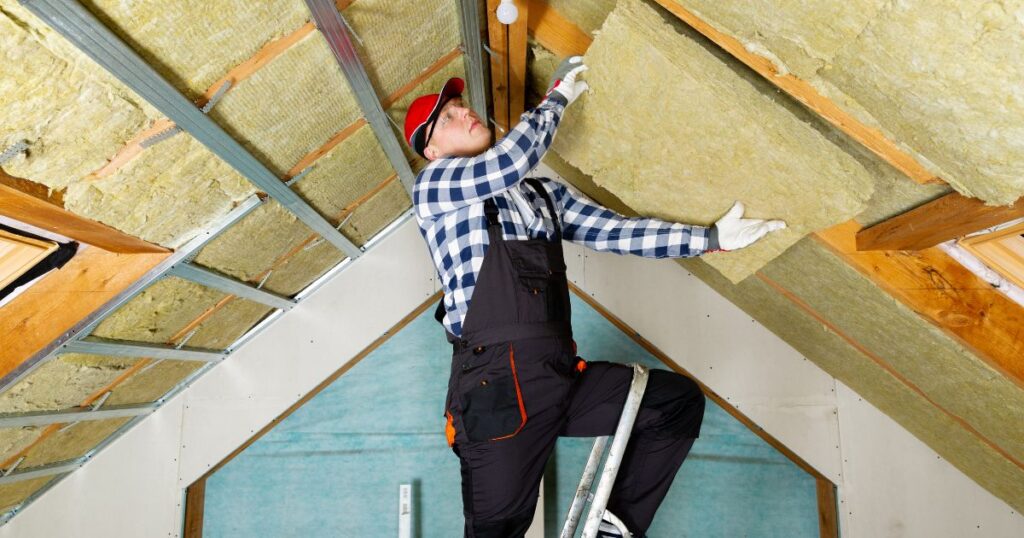
Proper insulation is crucial for creating an energy-efficient home. By choosing eco-friendly insulation materials, you can improve your home’s energy performance while minimizing environmental impact. Let’s explore some green insulation options and their benefits.
Eco-Friendly Insulation Materials:
- Cellulose Insulation:
- Made from recycled paper products, primarily newspaper
- Treated with borate compounds for fire and pest resistance
- High R-value (measure of insulation effectiveness) per inch
- Low embodied energy in production
- Can be blown in or dense-packed, ideal for retrofitting existing walls
- Wool Insulation:
- Natural, renewable resource
- Excellent sound absorption properties
- Naturally fire-resistant and moisture-regulating
- Long-lasting and biodegradable
- Suitable for walls, floors, and attics
- Cotton Insulation:
- Often made from recycled denim
- No harmful chemicals or irritants
- Good sound absorption qualities
- Treated for fire resistance
- Easy to install and handle
- Cork Insulation:
- Harvested from cork oak trees without harming the tree
- Naturally resistant to mold and pests
- Excellent thermal and acoustic properties
- Durable and long-lasting
- Soy-Based Foam Insulation:
- Made partially from soybean oil, a renewable resource
- Can be sprayed into cavities for a tight seal
- Good for air sealing and insulation
- Lower VOC emissions compared to traditional spray foam
Benefits of Proper Insulation:
- Reduced Energy Consumption:
- Well-insulated homes require less energy for heating and cooling
- Can lead to significant reductions in energy bills
- Decreases overall carbon footprint of the home
- Enhanced Comfort:
- Maintains more consistent temperatures throughout the house
- Reduces drafts and cold spots
- Improves overall living comfort in all seasons
- Moisture Control:
- Proper insulation helps manage moisture levels in walls and attics
- Reduces risk of mold growth and structural damage
- Sound Insulation:
- Many eco-friendly insulation materials also provide excellent sound absorption
- Creates a quieter indoor environment, especially in urban areas
- Improved Indoor Air Quality:
- Natural insulation materials often have fewer off-gassing issues compared to synthetic options
- Some materials, like wool, can help filter air pollutants
- Long-Term Cost Savings:
- While initial costs may be higher for some eco-friendly options, long-term energy savings often offset this investment
- Environmental Benefits:
- Use of recycled or renewable materials reduces demand for new raw materials
- Lower energy consumption reduces overall environmental impact of the home
When choosing insulation, consider factors such as the local climate, the specific area of the home being insulated, and any local building codes or regulations. It’s also important to ensure proper installation, as even the best insulation materials won’t perform effectively if not installed correctly.
By selecting green insulation options, you’re not only improving your home’s energy efficiency but also contributing to a more sustainable construction industry. These materials offer an excellent balance of performance and environmental responsibility, making them a smart choice for any eco-friendly home renovation.
Water Conservation Features
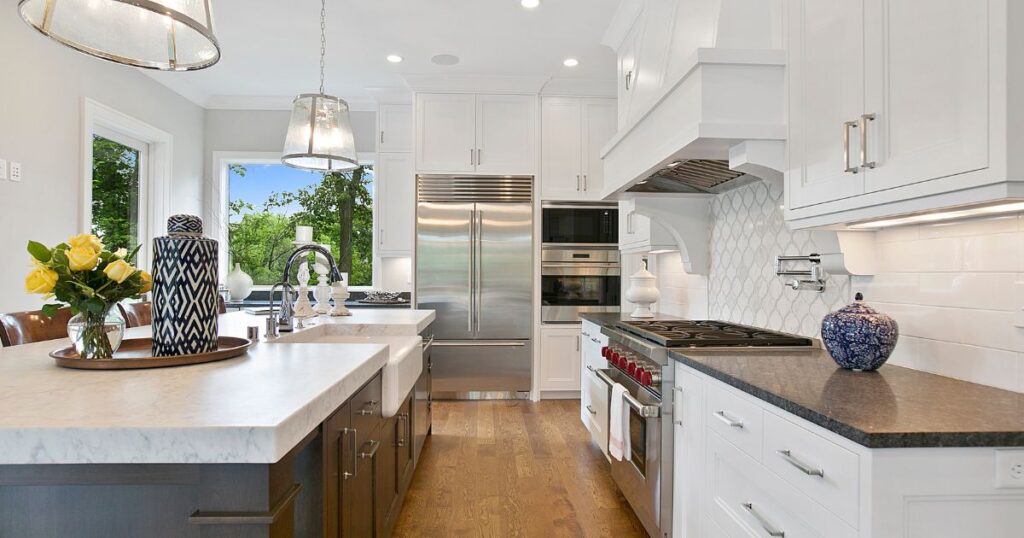
Water conservation is an essential aspect of any eco-friendly home renovation. By implementing water-saving features, you can significantly reduce your water consumption, lower your utility bills, and contribute to the preservation of this vital resource.
Water-Saving Fixtures:
- Low-Flow Toilets:
- Use 1.28 gallons per flush or less, compared to older models using 3-5 gallons
- Dual-flush options allow for even greater water savings
- Can save thousands of gallons of water per year for an average household
- Water-Efficient Faucets:
- Low-flow faucet aerators can reduce water flow to 1.5 gallons per minute or less
- Touchless faucets prevent water waste from forgetting to turn off the tap
- WaterSense labeled faucets ensure water efficiency without sacrificing performance
- Water-Saving Showerheads:
- Low-flow models use 2 gallons per minute or less, compared to standard 2.5 gallons
- Some models have pause buttons to temporarily stop water flow while lathering
- Thermostatic mixers maintain constant temperature, reducing water waste while adjusting
- ENERGY STAR Certified Appliances:
- Choose water-efficient dishwashers and washing machines
- These appliances use significantly less water than older models while maintaining performance
Rainwater Harvesting Systems:
Rainwater harvesting is an excellent way to reduce reliance on municipal water supplies for non-potable uses.
- Collection Methods:
- Roof-based systems collect rainwater from roof surfaces
- Land-based systems collect surface runoff
- Storage Options:
- Above-ground tanks or cisterns
- Underground storage systems
- Uses for Harvested Rainwater:
- Irrigation for gardens and lawns
- Flushing toilets
- Washing cars or outdoor areas
- Benefits:
- Reduces demand on municipal water supply
- Lowers water bills
- Helps manage stormwater runoff
- Considerations:
- Check local regulations regarding rainwater harvesting
- Ensure proper filtration and treatment for intended use
Greywater Recycling for Irrigation:
Greywater is gently used water from bathroom sinks, showers, tubs, and washing machines. It can be recycled for irrigation, reducing overall water consumption.
- Types of Greywater Systems:
- Simple gravity-fed systems for direct garden use
- More complex systems with filtration and storage capabilities
- Benefits:
- Reduces overall water consumption
- Decreases load on septic or sewer systems
- Can support lush gardens even in drought conditions
- Considerations:
- Use plant-friendly soaps and detergents
- Avoid using greywater on root vegetables or plants to be eaten raw
- Check local regulations regarding greywater use
- Installation:
- Can be incorporated during renovation or retrofitted to existing plumbing
- Professional installation recommended to ensure proper function and compliance with local codes
Additional Water Conservation Tips:
- Fix Leaks: Regularly check and repair any leaks in faucets, pipes, or toilets.
- Drought-Resistant Landscaping: Choose native, drought-tolerant plants to reduce irrigation needs.
- Smart Irrigation Systems: Install systems with moisture sensors to prevent overwatering.
- Insulate Hot Water Pipes: This reduces the time it takes for hot water to reach faucets, saving both water and energy.
By incorporating these water conservation features into your home renovation, you can significantly reduce your water footprint. Not only does this contribute to environmental sustainability, but it also results in long-term cost savings on your water bills. Remember, every drop counts in the effort to conserve our precious water resources.
Final Thoughts
We encourage all homeowners to consider sustainability as a core principle in their next renovation project. The long-term benefits to both the environment and your home’s value make it a wise and responsible choice. Every eco-friendly decision, no matter how small, contributes to a more sustainable future.
Remember, sustainable home renovation is not an all-or-nothing proposition. You can start with small changes and gradually incorporate more eco-friendly features as you’re able. Whether it’s switching to LED lighting, installing a smart thermostat, or embarking on a full-scale green renovation, every step counts.
By prioritizing sustainability in your home improvements, you’re not just creating a more efficient and comfortable living space for yourself and your family. You’re also contributing to a larger movement towards more sustainable living practices, setting an example for your community, and playing a part in preserving our planet for future generations.
As you plan your next renovation project, we urge you to consider the eco-friendly options discussed in this guide. Consult with green building professionals, research the latest sustainable technologies, and make choices that align with both your immediate needs and long-term environmental goals. Your home is your biggest investment – why not make it an investment in our planet’s future as well?


